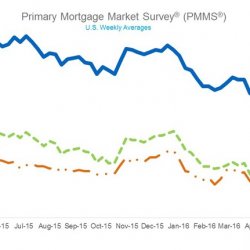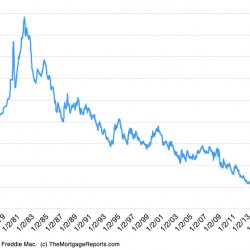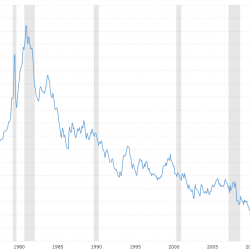fascination about how is the average origination fees on long term mortgages

It might seem like longer to some, but it was simply a decade ago that a disastrous real estate crisis damaged the lives of numerous Americans, with results that still exist today. As we approach the 10-year anniversary of Lehman Brothers' collapse and the Great Recession, we must take a look back at the subprime home loan crisis.
If the prime rate for a mortgage is what is offered to individuals with good credit and a history of dependability, subprime is for those who have actually struggled to fulfill those standards. Individuals who are authorized of subprime mortgages traditionally have low credit report and problems with financial obligation. There is no exact established number, but a FICO score listed below 640 is usually seen as subprime for a loan like a home mortgage. NINJA home mortgages were issued with no independent verification of the borrower's capability to repay the loan. Unsurprisingly, much of these debtors ended up being unable to pay their mortgages. Low underwriting standards fostered an environment where individuals who postured a genuine credit threat were able to get mortgage.
In truth, unique mortgage were created just for debtors who were not able to come up with the cash for a deposit. Under a so-called "piggyback" loan, a mortgage loan provider would issue one loan to cover the deposit and closing expenses, and then a 2nd loan to cover the house's purchase cost.
Incorrect home loan lending practices played a large role in the financial collapse. However, this is still not the whole story. In truth, activities in property and secondary financial services markets contributed a lot to the larger financial problems the Additional reading nation experienced throughout the recession. To start with, Visit this page houses were being appraised at exceedingly high values, pumping up real estate prices across the nation.
This triggered inflated housing worths to flow in realty markets. In turn, customers got loans for quantities that were more than the homes were worth outdoors market – who provides most mortgages in 42211. Some have actually even argued that appraisers' overvaluation of houses was the real root of the financial crisis. Securitization of home loan loans may have been the straw that broke the camel's back.
Little Known Questions About Who Provides Most Mortgages In 42211.
Securitization is the practice of transforming assets like home loans into securities like stocks and bonds by pooling assets together and gathering routine income streams from the newly-formed securities. The monetary sector began securitizing home loans in the late 1980s. Doing so allowed lenders to alleviate a few of the risk of offering subprime loans due to the fact that the debt was pooled and re-issued to securities financiers.
This process was immensely lucrative, and lending institutions thought they would profit regardless of whether any one debtor went into default. what do i do to check in on reverse mortgages. After all, if they didn't generate income off of the loan, they could still make cash by issuing securities or by offering the house through foreclosure if the borrower defaulted.
As a result, banks started increase the profitable practice of securitizing mortgage loans and offering collateralized financial obligation obligations. Of course, the concept of spreading out the danger just works when most of the loans are repaid. If expensive a portion of the loans are defaulted on, the securities' values plunge.
These losses triggered the failure of large investment banks like Bear Sterns and Lehman Brothers and the failure of Indymac, among the largest mortgage begetters in the United States. Congress enacted the Dodd-Frank Act in response to these conditions with the intent of preventing a comparable disaster in the future.

Dodd-Frank overhauled home mortgage lending practices, heightened oversight of banks and credit score companies, and included a whistle-blower provision that supplies financial benefit for the reporting of securities offenses. The Dodd-Frank Act was a far-reaching law, and it consisted of the Home mortgage Reform and Anti-Predatory Loaning Act, as well as the Consumer Financial Security Act.
Who Is Specialty Services For Home Mortgages ? Things To Know Before You Buy
Further, it customized elements of Guideline Z and modified aspects of the Fact in Lending Act. The Act needed pioneers to focus on the debtor's capability to repay the loan throughout the application process. Likewise, loan providers are required to make a "good faith determination regarding a customer's ability to repay the loan." This excellent faith decision required loan providers to tighten their underwriting standards, hence removing debtors' capability to certify using devices such as stated earnings loans.
To fight predatory lending, the Customer Financial Security Bureau passed the Know Prior to You Owe home loan disclosure guideline, which is designed to help customers understand their loans, and the accompanying files they sign (how to rate shop for mortgages). To promote this reward, the Bureau streamlined standard mortgage disclosure kinds and produced standardized industry practices that were more transparent.
The Dodd-Frank Act alleviated a good deal of unneeded threat in genuine estate loaning markets and moved a few of the staying risk of default from house owners to lending institutions. Under the law, loan providers sponsoring asset-backed securities should maintain at least 5 percent of the associated credit risk. Numerous believe this requirement will minimize lending institutions' desire to issue subprime loans.
Dodd-Frank Wall Street Reform and Consumer Protection Act, Pub. L. No. 111-203, 929-Z, 124 Stat. 1376, 1871 (2010) (codified at 15 U.S.C. 780).
The U.S. is not about to see a rerun of the real estate bubble that formed in 2006 and 2007, precipitating the Fantastic Economic downturn that followed, according to specialists at Wharton. More prudent loaning norms, increasing interest rates and high home costs have kept need in check. However, some misperceptions about the key chauffeurs and impacts of the housing crisis persist and clarifying those will ensure that policy makers and industry gamers do not repeat the exact same mistakes, according to Wharton property teachers Susan Wachter and Benjamin Keys, who just recently took a look back at the crisis, and how it has actually influenced the current market, on the Knowledge@Wharton radio program on SiriusXM.
The Best Guide To Mortgages Or Corporate Bonds Which Has Higher Credit Risk
As the mortgage financing market broadened, it drew in droves of brand-new players with cash to provide. "We had a trillion dollars more coming into the home mortgage market in 2004, 2005 and 2006," Wachter stated. "That's $3 trillion dollars entering into home mortgages that did not exist before non-traditional home loans, so-called NINJA get more info home mortgages (no earnings, no task, no properties).
They also increased access to credit, both for those with low credit rating and middle-class homeowners who desired to secure a second lien on their house or a home equity line of credit. "In doing so, they produced a great deal of utilize in the system and presented a lot more danger." Credit expanded in all directions in the accumulation to the last crisis "any direction where there was hunger for anybody to obtain," Keys said.





Ingen kommentarer endnu